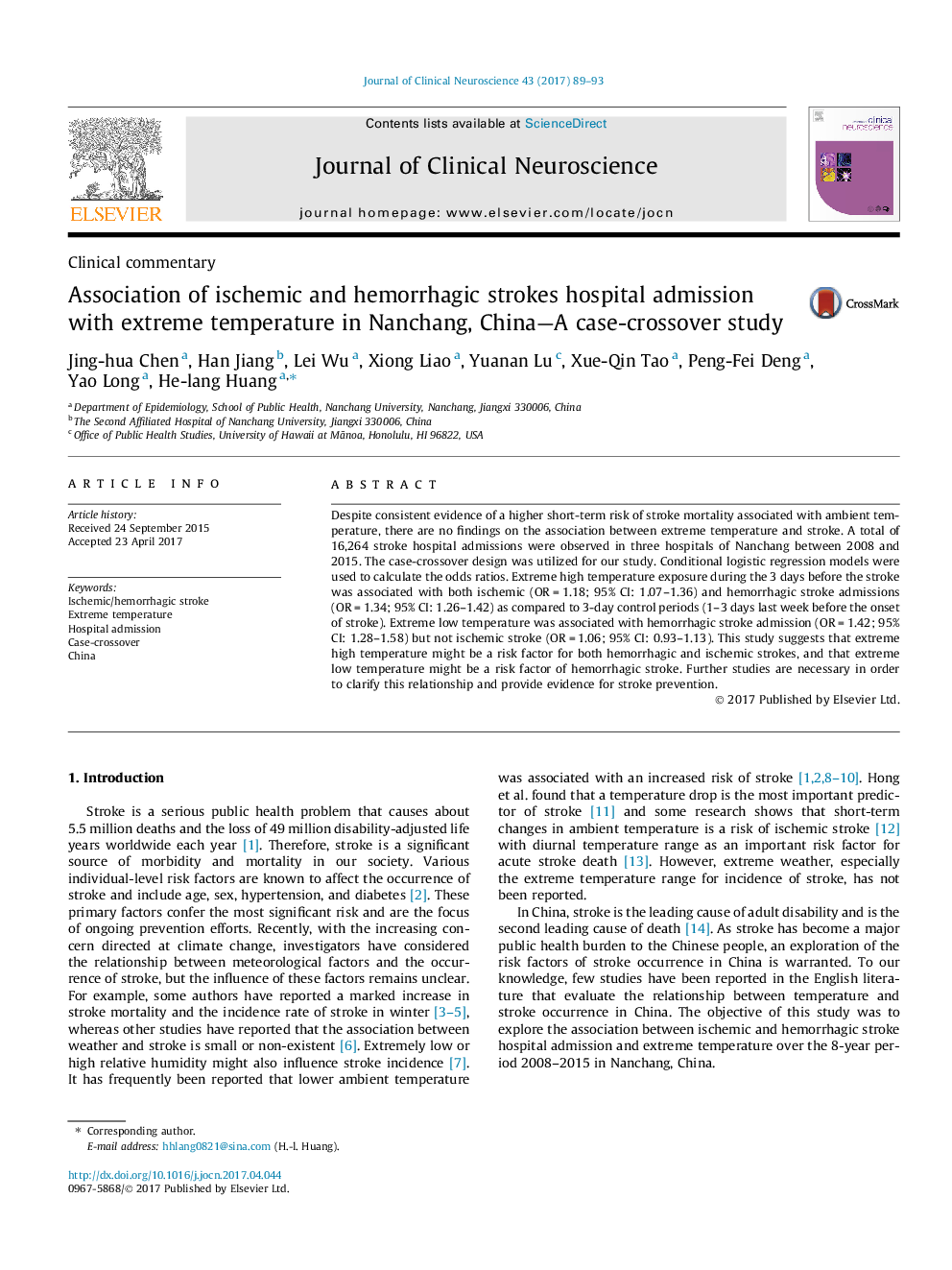| Article ID | Journal | Published Year | Pages | File Type |
|---|---|---|---|---|
| 5629636 | Journal of Clinical Neuroscience | 2017 | 5 Pages |
â¢A total of 16,264 stroke hospital admissions were observed between 2008 and 2015 in three hospitals of Nanchang, China.â¢Extreme high temperature was associated with both ischemic and hemorrhagic stroke admissions.â¢Extreme low temperature was associated with hemorrhagic stroke admission but not ischemic stroke.
Despite consistent evidence of a higher short-term risk of stroke mortality associated with ambient temperature, there are no findings on the association between extreme temperature and stroke. A total of 16,264 stroke hospital admissions were observed in three hospitals of Nanchang between 2008 and 2015. The case-crossover design was utilized for our study. Conditional logistic regression models were used to calculate the odds ratios. Extreme high temperature exposure during the 3Â days before the stroke was associated with both ischemic (ORÂ =Â 1.18; 95% CI: 1.07-1.36) and hemorrhagic stroke admissions (ORÂ =Â 1.34; 95% CI: 1.26-1.42) as compared to 3-day control periods (1-3Â days last week before the onset of stroke). Extreme low temperature was associated with hemorrhagic stroke admission (ORÂ =Â 1.42; 95% CI: 1.28-1.58) but not ischemic stroke (ORÂ =Â 1.06; 95% CI: 0.93-1.13). This study suggests that extreme high temperature might be a risk factor for both hemorrhagic and ischemic strokes, and that extreme low temperature might be a risk factor of hemorrhagic stroke. Further studies are necessary in order to clarify this relationship and provide evidence for stroke prevention.
